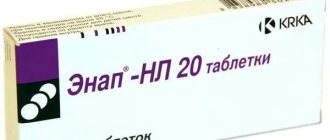BETALOK ZOK TABLE 25 MG No. 14
Composition and release form
Active substance: metoprolol tartrate 25 mg
- Excipients:
- lactose monohydrate;
- magnesium stearate;
- sodium carboxymethyl starch;
- anhydrous colloidal silicon dioxide;
- povidone.
Nosological classification (ICD-10)
- I21 Acute myocardial infarction
- I25 Chronic ischemic heart disease
- I47.1 Supraventricular tachycardia
- R00.0 Tachycardia, unspecified
- R07.2 Pain in the heart area
Description of the dosage form
Solution for intravenous administration: clear, colorless liquid.
Tablets: biconvex, round, white, scored and engraved A/mE on one side.
pharmachologic effect
Pharmacological action - antiarrhythmic, hypotensive, antianginal.
Indications for Betaloc®
arterial hypertension: lowering blood pressure and reducing the risk of cardiovascular and coronary death (including sudden death);
angina pectoris;
cardiac arrhythmias, including supraventricular tachycardia;
after myocardial infarction (in complex therapy);
functional disorders of cardiac activity accompanied by tachycardia;
prevention of migraine attacks;
hyperthyroidism (complex therapy).
Contraindications
known hypersensitivity to metoprolol and its components or to other beta-blockers;
AV block II and III degrees, heart failure in the stage of decompensation, clinically significant sinus bradycardia, sick sinus syndrome, cardiogenic shock, severe peripheral circulatory disorders, arterial hypotension;
patients with acute myocardial infarction with a heart rate of less than 45 beats per minute, a PQ interval of more than 0.24 s, or a blood pressure of less than 100 mm Hg;
In patients receiving β-blockers, the administration of “slow” calcium channel blockers such as verapamil is contraindicated.
serious peripheral vascular diseases (with the threat of gangrene);
age under 18 years (efficacy and safety have not been established).
Patients receiving long-term or intermittent therapy with inotropic agents acting on β-adrenergic receptors.
With caution: 1st degree AV block, Prinzmetal's angina, COPD (emphysema, chronic obstructive bronchitis, bronchial asthma), diabetes mellitus, severe renal failure.
Use during pregnancy and breastfeeding
Pregnancy
Like most drugs, Betaloc® should not be prescribed during pregnancy and breastfeeding, unless the expected benefit to the mother outweighs the potential risk to the fetus. Like other antihypertensive agents, beta-blockers may cause side effects such as bradycardia in the fetus, neonates, or breastfed children, and therefore particular caution should be exercised when prescribing beta-blockers in the last trimester of pregnancy and immediately before birth. .
Lactation period
The amount of metoprolol excreted in breast milk and the β-adrenergic blocking effect in a breastfed child (when the mother takes metoprolol in therapeutic doses) are insignificant.
Side effects
Betaloc® is well tolerated by patients, and side effects are mostly mild and reversible.
As a result of clinical studies or with the use of Betaloc® (metoprolol tartrate) in clinical practice, the following undesirable side effects have been described. In many cases, a cause-and-effect relationship with treatment with Betaloc® has not been established. The following criteria were used to assess the frequency of cases: very common (>10%), common (1–9.9%), uncommon (0.1–0.9%), rare (0.01–0.09%) and very rare (<0.01%).
From the cardiovascular system: often - bradycardia, postural disturbances (very rarely accompanied by fainting), coldness of the extremities, palpitations; uncommon - temporary increase in symptoms of heart failure, cardiogenic shock in patients with acute myocardial infarction, AV block of the first degree; rarely - other cardiac conduction disorders, arrhythmias; very rarely - gangrene in patients with previous severe peripheral circulatory disorders.
From the side of the central nervous system: very often - increased fatigue; often - dizziness, headache; uncommon - paresthesia, convulsions, depression, loss of attention, drowsiness or insomnia, nightmares; rarely - increased nervous excitability, anxiety, impotence/sexual dysfunction; very rarely - amnesia/memory impairment, depression, hallucinations.
From the gastrointestinal tract: often - nausea, abdominal pain, diarrhea, constipation; infrequently - vomiting; rarely - dry mouth.
From the skin: infrequently - rash (in the form of urticaria), increased sweating; rarely - hair loss; very rarely - photosensitivity, exacerbation of psoriasis.
From the liver: rarely - liver dysfunction.
From the respiratory system: often - shortness of breath with physical effort; uncommon - bronchospasm in patients with bronchial asthma; rarely - rhinitis.
From the senses: rarely - visual disturbances, dryness and/or irritation of the eyes, conjunctivitis; very rarely - ringing in the ears, disturbances of taste.
From the side of metabolism: infrequently - weight gain.
From the musculoskeletal system: very rarely - arthralgia.
From the blood system: very rarely - thrombocytopenia.
For tablets additionally
From the liver: very rarely - hepatitis.
Directions for use and doses
Inside, both with food and on an empty stomach.
Arterial hypertension
100–200 mg of Betaloc® once in the morning or in 2 divided doses; in the morning and in the evening. If necessary, the dose can be increased or another antihypertensive agent added.
Long-term antihypertensive therapy of 100–200 mg of Betaloc® per day can reduce overall mortality, including sudden death, as well as the incidence of cerebral strokes and coronary circulatory disorders in patients with arterial hypertension.
Angina pectoris
100–200 mg/day in 2 divided doses; in the morning and in the evening. If necessary, another antianginal drug may be added to therapy.
Heart rhythm disturbances
100–200 mg/day in 2 divided doses; in the morning and in the evening. If necessary, another antiarrhythmic drug may be added to therapy.
Maintenance therapy after myocardial infarction
The maintenance dose is 200 mg/day in 2 divided doses; in the morning and in the evening. Prescribing Betaloc® at a dose of 200 mg/day can reduce mortality in patients who have suffered a myocardial infarction and reduce the risk of developing a recurrent myocardial infarction (including in patients with diabetes mellitus).
Functional cardiac disorders accompanied by tachycardia
100 mg of Betaloc® 1 time per day, it is recommended to take the tablet in the morning. If necessary, the dose can be increased.
Preventing migraine attacks
100–200 mg/day in 2 divided doses; in the morning and in the evening.
Hyperthyroidism
150–200 mg/day in 3–4 doses.
Renal dysfunction
There is no need to adjust the dose in patients with impaired renal function.
Liver dysfunction
Usually, due to the low degree of binding to plasma proteins, no dose adjustment of metoprolol is required. However, in severely impaired liver function (in patients with severe liver cirrhosis or portacaval anastomosis), a dose reduction may be required.
Elderly age
There is no need to adjust the dose in elderly patients.
Children.
Experience with the use of Betaloc® in children is limited.
Overdose
Symptoms: the consequences of an overdose of Betaloc® can be a pronounced decrease in blood pressure, sinus bradycardia, AV block, heart failure, cardiogenic shock, cardiac arrest, bronchospasm, impaired consciousness/coma, nausea, vomiting and cyanosis.
Concomitant use of alcohol, antihypertensive drugs, quinidine or barbiturates may worsen the patient's condition.
The first signs of overdose may appear within 20 minutes to 2 hours after taking the drug.
Treatment: administration of activated carbon, and, if necessary, gastric lavage. In case of a pronounced decrease in blood pressure, bradycardia, or the threat of heart failure, a β1-adrenergic agonist (for example, dobutamine) should be administered intravenously at intervals of 2–5 minutes or by infusion until a therapeutic effect is achieved. If a selective β1-agonist is not available, IV dopamine or atropine sulfate can be administered to block the vagus nerve.
If therapeutic effect is not achieved, other sympathomimetics such as dobutamine or norepinephrine can be used.
Glucagon can be administered at a dose of 1–10 mg. Sometimes it may be necessary to use a pacemaker. To relieve bronchospasm, a β2-adrenergic agonist should be administered intravenously.
It must be taken into account that the doses of antidotes required to eliminate the symptoms that occur with an overdose of β-blockers are much higher than therapeutic doses, since β-adrenergic receptors are bound to the β-blocker.
special instructions
Patients taking β-blockers should not be administered intravenous calcium channel blockers such as verapamil.
When using β1-blockers, the risk of their influence on carbohydrate metabolism or the possibility of masking hypoglycemia is significantly less than when using non-selective β-blockers.
In patients with chronic heart failure in the stage of decompensation, it is necessary to achieve a stage of compensation both before and during treatment with the drug.
Non-selective β-blockers are not recommended for patients suffering from Prinzmetal's angina.
Very rarely, patients with impaired atrioventricular conduction may experience deterioration (a possible outcome is AV block). If bradycardia develops during treatment, the dose of Betaloc® should be reduced. Metoprolol may worsen symptoms of peripheral arterial circulation disorders, mainly due to a decrease in blood pressure. Caution should be exercised when prescribing the drug to patients suffering from severe renal failure, metabolic acidosis, and co-administration with cardiac glycosides.
Patients suffering from pheochromocytoma should be prescribed an α-blocker in parallel with Betaloc®.
In case of surgery, the anesthesiologist should be informed that the patient is taking a beta-blocker.
In patients taking β-blockers, anaphylactic shock occurs in a more severe form.
Patients suffering from obstructive pulmonary disease are not recommended to prescribe β-blockers. In case of poor tolerance to other antihypertensive drugs or their ineffectiveness, metoprolol can be prescribed, since it is a selective drug. It is necessary to prescribe the minimum effective dose; if necessary, a β2-adrenergic agonist may be prescribed.
In patients with liver cirrhosis, the bioavailability of metoprolol increases.
Abrupt withdrawal of the drug should be avoided. If it is necessary to discontinue the drug, withdrawal should be carried out gradually. In most patients, the drug can be discontinued within 14 days. The dose of the drug is reduced gradually, in several doses, until a final dose of 25 mg is reached once a day. Patients with coronary artery disease should be closely monitored by a physician during drug withdrawal.
Impact on the ability to drive a car and operate technical devices. When using the drug, episodes of dizziness or general weakness are possible, and therefore it is necessary to refrain from driving vehicles and engaging in potentially hazardous activities that require increased concentration and speed of psychomotor reactions.
A comment
Before using the drug, you must read the instructions for use.
Conditions for dispensing from pharmacies
- On prescription.
Storage conditions for Betaloc®
- In a place protected from light, at temperatures below 25 °C.
- Keep out of the reach of children.
Shelf life of Betaloc®
- 5 years.
- Do not use after the expiration date stated on the package.
Pharmacodynamics and pharmacokinetics
The active ingredient Betaloc reduces or eliminates the stimulating effect of catecholamines during stress and exercise, reduces myocardial contractility and cardiac output, reduces high blood pressure and heart rate. In addition, metoprolol reduces myocardial oxygen demand and prolongs diastole.
The drug may slightly increase TG levels and also slightly reduce HDL fractions and free fatty acid levels in the blood plasma.
The tablets are characterized by a delayed release of the active substance, so the concentration of the drug in the blood plasma remains unchanged, which ensures a stable clinical effect for a day or more. The drug is better tolerated than its analogues, and the risk of developing unwanted side effects is significantly reduced.
Betaloc ZOK is completely absorbed. Absorption does not depend on the timing of meals. The degree of connection with blood plasma proteins is 5-10%. The active substance is metabolized in the liver to form three metabolites without beta-blocking activity.
About 95% of the drug is excreted in the urine, the remaining amount remains unchanged. The half-life averages 3-4 hours.
Indications for use
What are Betaloc ZOK tablets for? First of all, they are prescribed to patients with:
- arterial hypertension;
- heart rhythm disturbances;
- angina pectoris;
- functional disorders of the heart, which are accompanied by tachycardia .
As an element of therapy, the drug is used for chronic heart failure . In addition, Betaloc ZOK is used to reduce mortality and the likelihood of recurrent infarction after the acute phase of myocardial infarction , as well as as a prophylactic against migraine .
Overdose
There are cases where, at a dosage of 7.5 g, the drug caused severe intoxication with a fatal outcome in an adult. At doses of 1.4 and 2.5 g, respectively, there was moderate and severe intoxication.
An overdose of this drug can lead to respiratory depression, atrioventricular block I–III degrees, decreased blood pressure, heart failure, bradycardia , asystole , weak peripheral perfusion , cardiogenic shock , apnea . In addition, Betaloc ZOK in increased doses can cause impairment of consciousness, tremor , excessive sweating and fatigue, bronchospasm , vomiting, hypoglycemia or hyperglycemia , renal impairment, loss of consciousness, convulsions, paresthesia , nausea, as well as esophageal spasm and hyperkalemia .
Initial signs of a drug overdose will be noticeable 20-120 minutes after administration.
Activated carbon is prescribed as treatment , as well as gastric lavage if necessary.
Depending on the manifestations of overdose, symptomatic treatment is carried out. So, you may need intubation and adequate ventilation, ECG monitoring, blood volume replenishment and glucose infusions. If necessary, Atropine (before gastric lavage) is administered intravenously 1-2 mg. For myocardial depression, Dobutamine or Dopamine . It is possible to use Glucagon intravenously at a dosage of 50–150 mcg per 1 kg of weight. In some cases, Adrenaline , terbutaline (to relieve bronchospasm ), as well as an artificial pacemaker, help. For arrhythmia and an extensive ventricular complex, a sodium solution is injected. Resuscitation measures may be necessary.
Interaction
When using the drug Betaloc ZOK and other beta-adrenergic receptor blockers, as well as MAO inhibitors and ganglion blockers, strict medical supervision is required.
The drug should not be combined with Propafenone , Verapamil . When taking Diltiazem and/or antiarrhythmic drugs, a negative ino- and chronotropic effect may develop. When using inhalational anesthetics, the cardiodepressive effect is enhanced.
It is possible that inducers or inhibitors of microsomal liver enzymes may influence the content of the active substance Betaloc ZOK in the blood plasma. Its concentration is reduced when combined with Rifampicin or increased when taken simultaneously with Cimetidine , hydralazine , phenytoin , and serotonin .
When discontinuing clonidine, Betaloc ZOK must be discontinued several days before.
In combination with COX inhibitors, the antihypertensive effect of the drug may be reduced. Dosage adjustments of oral antidiabetic agents may also be necessary when administered concomitantly.



